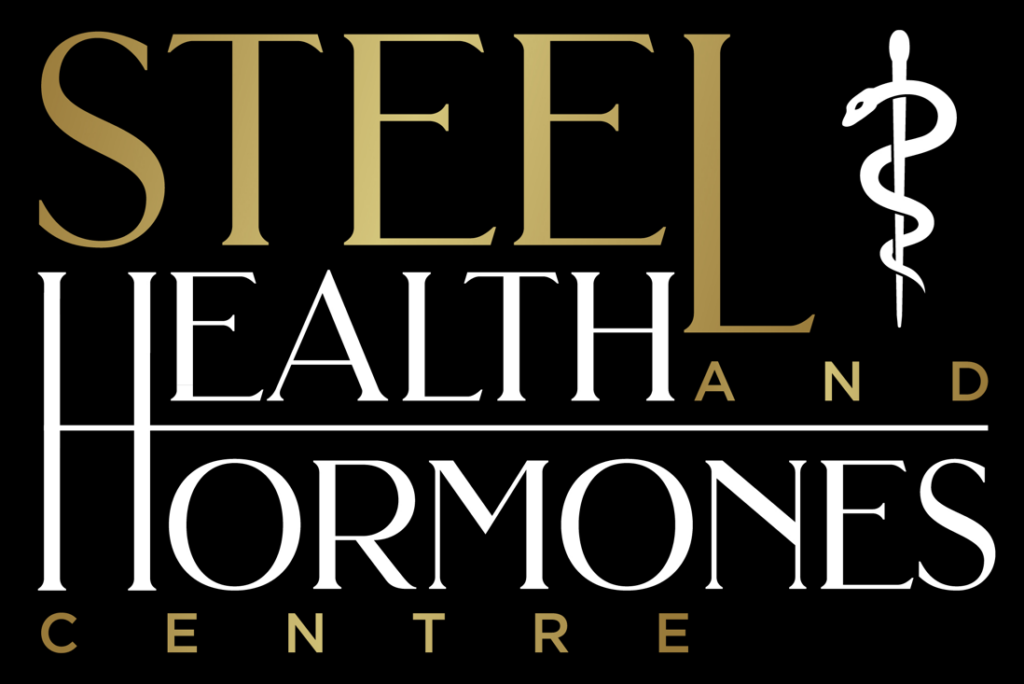Today we’re going to discuss oxandrolone, more commonly known as Anavar. I want to preface this article by reminding everyone that although I am the owner of Steel Health and Hormones Centre, and HRT and weight loss clinic located in Westmoreland and Allegheny county, Pennsylvania, I am not a doctor. This should not be used to diagnose, treat, or stand in the place of medical advice from a qualified medical professional. If you’re interested in working with a qualified medical professional, please fill out a contact form at the bottom of this article.
It should also be stated that the clinical use at this point for oxandrolone is rare. Most men can achieve optimal health, free testosterone, and muscle mass with bioidential hormone replacement therapy. This is a more exotic medication for an above-board medical company but it does have its uses.
I’m going to break this article up into 4 parts.
- Chemical Composition and Background on Oxandrolone
- Potential Benefits
- Potential Drawbacks
- Best Practices
Part 1: Chemical Composition of Oxandrolone
Like all anabolic-androgenic steroids (AAS), oxandrolone is derived from testosterone—or rather, from dihydrotestosterone (DHT), which gives it unique properties and distinguishes it from other steroids. Originally developed by Searle Laboratories (now part of Pfizer), oxandrolone was designed to provide anabolic effects while minimizing androgenic side effects. Many pharmaceutical companies have attempted to modify testosterone to enhance its benefits while reducing drawbacks, but this approach is rarely as straightforward as intended.
Oxandrolone was developed by replacing the second carbon atom with an oxygen atom (hence the “Oxa” in its name) and adding a methyl group. This modification places oxandrolone in the C17-alkylated category, meaning it has a methyl group at the C17 alpha position, allowing it to be orally bioavailable. Other steroids in this category include stanozolol (Winstrol) and methandrostenolone (Dianabol).
Liver Considerations
A unique characteristic of oxandrolone, compared to other methylated oral steroids, is its relatively low hepatotoxicity. Unlike many oral AAS that place significant strain on the liver, oxandrolone has been studied in patients with alcoholic cirrhosis. While it did not improve liver function, it also did not exacerbate liver damage (Study Link). More on this later…
Medical History and Approval
- FDA Approved (1964): Initially used to treat muscle wasting.
- Withdrawn (1989): Removed from the market.
- Reintroduced (1995): Brought back for muscle-wasting disorders.
- Current Use: Dropped from FDA approval in 2023, but is used illicitly for muscle building purposes, or in clinical settings for men on TRT who need additional free testosterone and increasing the dose leads to side effects.
Pharmacokinetics
- Half-Life: ~10 hours
- Elimination Time: 50–60 hours – it takes 5-6 half lives for a medication to be eliminated.
- Metabolite Detection: Up to 3–4 weeks
Further Reading: Oxandrolone Overview | Oxandrin Insert
Part 2: Potential Benefits of Oxandrolone
1. Promotes Healing and Anabolism
Oxandrolone has been widely studied for its anabolic properties and minimal side effects. One study compared human growth hormone (HGH) and oxandrolone in burn victims, showing that both agents increased healing time, but oxandrolone did so without observable side effects (Study Link).
Another 12-month study on severely burned children found:
“Oxandrolone significantly decreased REE (Resting Energy Expenditure) and RPP (Respiratory Protein Permeability) while increasing IGF-1 secretion. Combined with exercise, it significantly improved lean body mass and muscle strength. No deleterious side effects were observed.”
This study administered 0.1 mg/kg of body weight twice daily, which for a 200 lb man equates to 9 mg twice per day. This is significantly lower than street doses.
Oxandrolone has also been studied for its potential to improve lung function in pediatric burn victims (Study Link).
2. Reduces Sex Hormone-Binding Globulin (SHBG)
A bit of background here will help the reader understand why this is relevant. Your testosterone can be either bound, or free. When it’s bound, it’s not completely inert, but it it’s not available for immediate use. Most men feel best when their free-testosterone is high-normal. Some men have a hard time achieving therapeutic levels of free-testosterone even on TRT. There are several lifestyle changes that can alter free vs bound testosterone, but that is outside of the scope of this article. Oxandrolone has been shown to lower SHBG, potentially freeing up more testosterone for use (Study Link).
3. Does Not Aromatize
Since oxandrolone is a DHT derivative, it does not convert to estradiol via aromatization. This makes it beneficial for men sensitive to high estradiol levels, reducing side effects like water retention and gynecomastia. Remember, estradiol too low can also have deleterious side effects. You want your estradiol and testosterone in optimal ranges. You don’t want to burry either one.
Part 3: Potential Drawbacks of Oxandrolone
1. Liver Stress
Despite its reputation as a “mild” oral steroid, oxandrolone can still impact liver function. Clinical data and patient experience show mild elevations in ALT and AST levels—markers of liver stress. While not as severe as other oral steroids, liver toxicity remains a concern, particularly at higher doses.
2. Testosterone Suppression
Like all androgens, oxandrolone suppresses natural testosterone production. This occurs because the body perceives an external androgen source and reduces endogenous production, which can lead to:
- Lower total testosterone
- Reduced estradiol (since testosterone is a precursor and oxandrolone does not convert)
- Potential symptoms of low testosterone and estrogen – sexual dysfunction, mood disturbances, etc.
3. Negative Impact on Lipid Profile
Oxandrolone has been shown to cause:
- Decreased HDL (“good” cholesterol)
- Increased LDL (“bad” cholesterol)
- Elevated liver enzymes (Study Link)
4. Potential for DHT-Related Side Effects
DHT-related issues such as hair loss and acne may occur. Even though oxandrolone is a mild androgen, it is still an androgen and a DHT derivative at that. This can lead to DHT related side effects at high doses.
Part 4: Best Practices for Oxandrolone Use
1. Mitigating Liver Stress
First and foremost, always use the minimal effective dose. If you can get everything you need out of 2.5mg daily, there is no reason to take 10mg.
Two supplements may help protect liver health:
- N-Acetylcysteine (NAC): Supports glutathione production, a key antioxidant.
- TUDCA: May aid bile flow and liver detoxification.
- These supplements are more expensive than the “liver detox tea” you’re probably drinking, but if you’re going to break the bank for real oxandrolone, penny up for your health.
2. Sublingual Administration
Some users take oxandrolone sublingually to bypass first-pass liver metabolism. While some report success, others find it less effective than a pill. Anecdotally we see very little liver stress with this method, but the results are mixed.
3. Pairing with Testosterone
To counteract testosterone suppression, oxandrolone is best used alongside TRT, which:
- Maintains testosterone levels
- Ensures adequate estradiol production
4. Managing Lipid Issues
- Increase fiber intake to help clear LDL
- Consume healthy fats to support HDL
- Regular cardiovascular exercise
- Avoid deleterious lifestyle choices like smoking
5. Dose Considerations
- Use the minimal effective dose for the shortest duration possible.
- Avoid stacking multiple hepatotoxic substances like other oral medications.
6. Hair Loss Management
For men concerned about DHT-related hair loss, finasteride (a 5-alpha reductase inhibitor) may help but should be used cautiously as this could have its own host of side effects.
Final Takeaways
- Oxandrolone is a well-tolerated anabolic agent that can aid healing, muscle retention, and testosterone bioavailability.
- Potential side effects include liver stress, lipid changes, and testosterone suppression.
- Best practice includes low doses, monitoring bloodwork, using liver support supplements, and combining with testosterone.
If you’re interested in a white glove approach to HRT please fill out the contact form below and someone will be in touch within 24 hours.
Bibliography
1. https://journals.lww.com/plasreconsurg/citation/2006/09010/oxandrolone.33.aspx
3. https://www.accessdata.fda.gov/drugsatfda_docs/label/2005/013718s023lbl.pdf
4. https://pubmed.ncbi.nlm.nih.gov/10323605/
5. https://academic.oup.com/jbcr/article/37/5/273/4563468?utm_source=chatgpt.com&login=false


